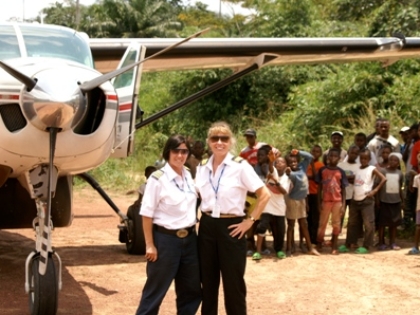Well, we made it! Connor (my 17-year-old co-pilot) and I landed in Beverly, MA 10 days and 30 flight hours after departing the west coast. We spent about 3 ½ days of that time waiting out weather and airplane repairs, and we never really had smooth, beautiful flight conditions—partly because of the summer thermals, and partly because of a really powerful cold front that caught up to us three days into the trip and we then spent the rest of the time trying not to run into from the back side. Even our six-minutes-past-sunrise departure and flight leg from Twin Falls, Idaho was bumpy.
We had three mechanical failures—one of which required a precautionary/emergency Return-to-Base landing in Sioux City, Iowa, thermals so strong the airplane didn’t want to descend into Rapid City, South Dakota, and downdrafts so strong that it didn’t want to climb out of Wilkes-Barre, Pennsylvania. And wrestling a light airplane around in bumpy skies does get a bit tiring, after a while. And yet, for all its challenges, the trip also reminded me, in many ways, of why people love physical adventure so much.
For one thing … nature really is impressive. Sometimes it’s impressive in uncomfortable ways, of course, like when the “hand-of-God” whacks of turbulence send your airplane lurching up, down or sideways without notice, or when landing is a wrestling match between you and the winds trying to blow you off the runway sideways. But from the jagged peaks of the Rocky Mountains and the moonscape of lava fields and the Dakota Badlands to dense wooded folds of the Allegheny Mountains and towering cloud formations in the sky, nature really does know how to put on a dramatic visual show.
Nature is also incredibly honest and straightforward. It doesn’t connive, indulge in sneaky or underhanded behavior, or play political games. The challenges are clear: Weather. Mechanical failure. Physical skill and enough good judgment to keep you alive. Nature may dish out nasty weather, but it never dishes out a nasty attitude or personal attack. And there is something incredibly refreshing about that. Oddly enough, even though the potential consequences in a physical adventure include death, it can actually feel less stressful than wading through a minefield of more “civilized” hazards in society or the workplace.
Physical adventure also allows or requires you to disconnect a bit from all the noise of daily life. In the 10 days that Connor and I were on the road (so to speak), our world was a simple one. Wake up. Eat. Check weather. Flight plan. Pre-flight. Fly. Land. Eat. Check weather. Flight plan. Pre-flight. Fly. Land. Close up the airplane. Find a place to stay. Find a place to eat. Eat. Try to fall into bed in time for at least 7 hours of sleep before doing it all over again.
When we had mechanical failures or weather to wait out, we explored local communities and sights. We wandered into Yellowstone, saw petroglyph caves, and visited Mount Rushmore and the Chief Crazy Horse Monument. But what we didn’t do was spend time watching TV. Or even reading the newspaper. The information being discussed in the media wasn’t relevant to our world at that moment, and the information that actually mattered to us—where that cold front was, what the surface winds were doing 300 miles down the road, and where the cloud bases were—wasn’t available on the news networks or outlets.
The interesting thing was … we didn’t seem to have missed all that much. A lot of what filled the airwaves during our trip was like one of the cumulus/thunderstorm clouds we watched along the way: it appeared, built, peaked, and dissipated before we really had to deal with it. Some issues will linger, or have more lasting impact, of course. But the chatter of the day came and went without us. And not only did we not feel as if we’d missed all that much—it also felt far less tiring than trying to keep up with every single pitch, foul ball, and hit, run and error as they played themselves out in local, national, and foreign affairs.
I’ve often said that one of the great things about flying is the perspective it allows you—from a couple of thousand feet above the Earth, one tends to see the long view and geologic timeframes. Small and petty annoyances retreat into their proper, insignificant place. But really, the same is true of any experience that removes you from the chatter and detail of daily life and immerses you in the larger, longer-lasting, and grander world of nature. And every now and then, it does the mind and soul good to get a recalibration on timeframes, scales of importance, and the things that last, long after any news cycle has been forgotten.
Next post: Is Adventure Fun?
Previous post: Adventure Calls Again …






Glad to hear you made it all the way safe and sound!
I would like to hear technical information about the trip. For example, the distance, how many miles covered in one day. How fast did the plane fly? Oil consumption? Fuel? What mechanical problems occurred? Glad you made a safe trip. Thanks Jimmy
Glad to hear you made it. So what is Connor’s impression? Does he have any new thoughts about becoming a pilot?
Regarding the technical information — I’m still compiling the totals. Back with you on that one. As for Connor’s post-trip impressions … I’ll see if I can’t get some of those from the horse’s mouth, so to speak, instead of speaking for him. Stay tuned …